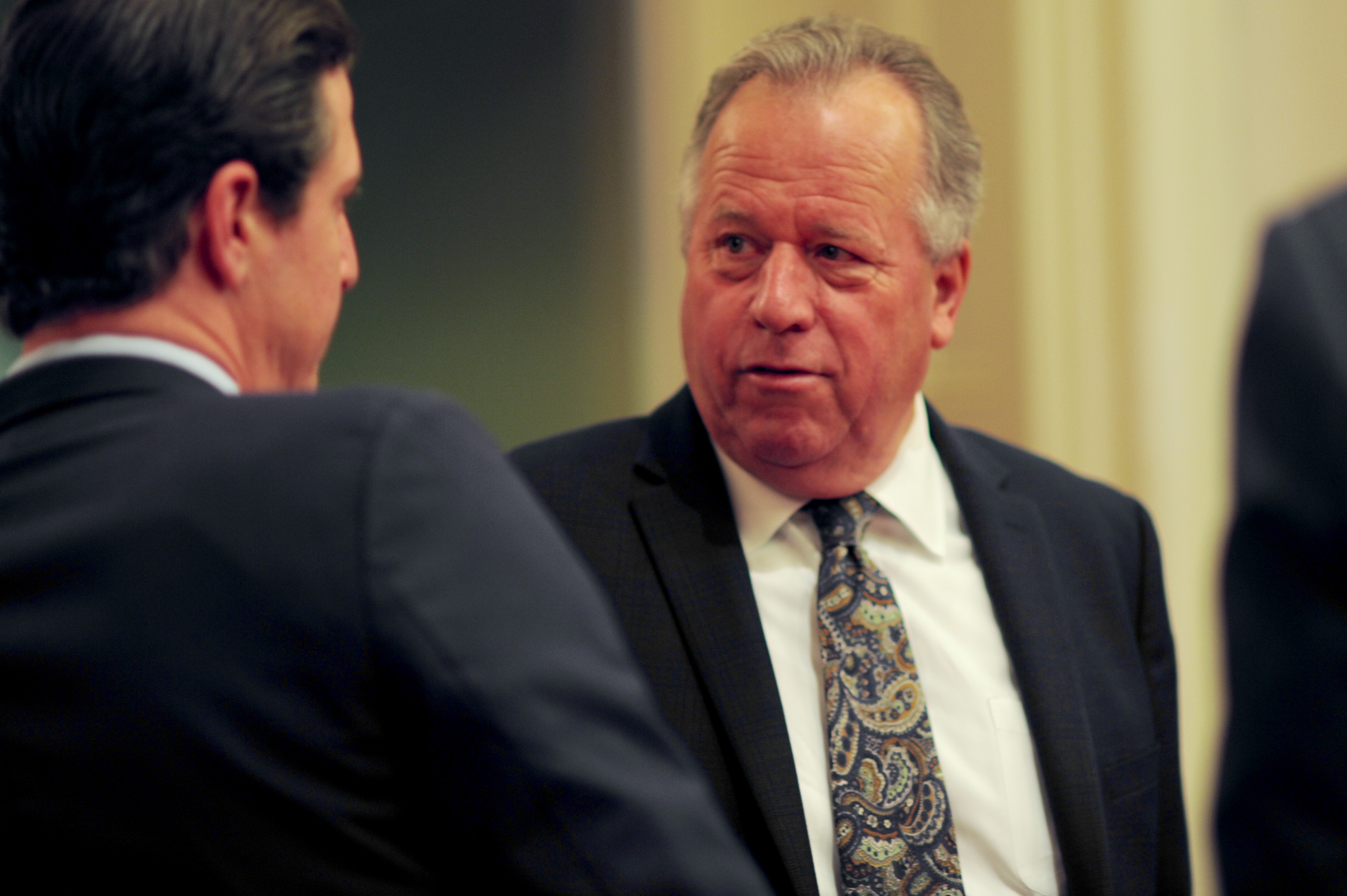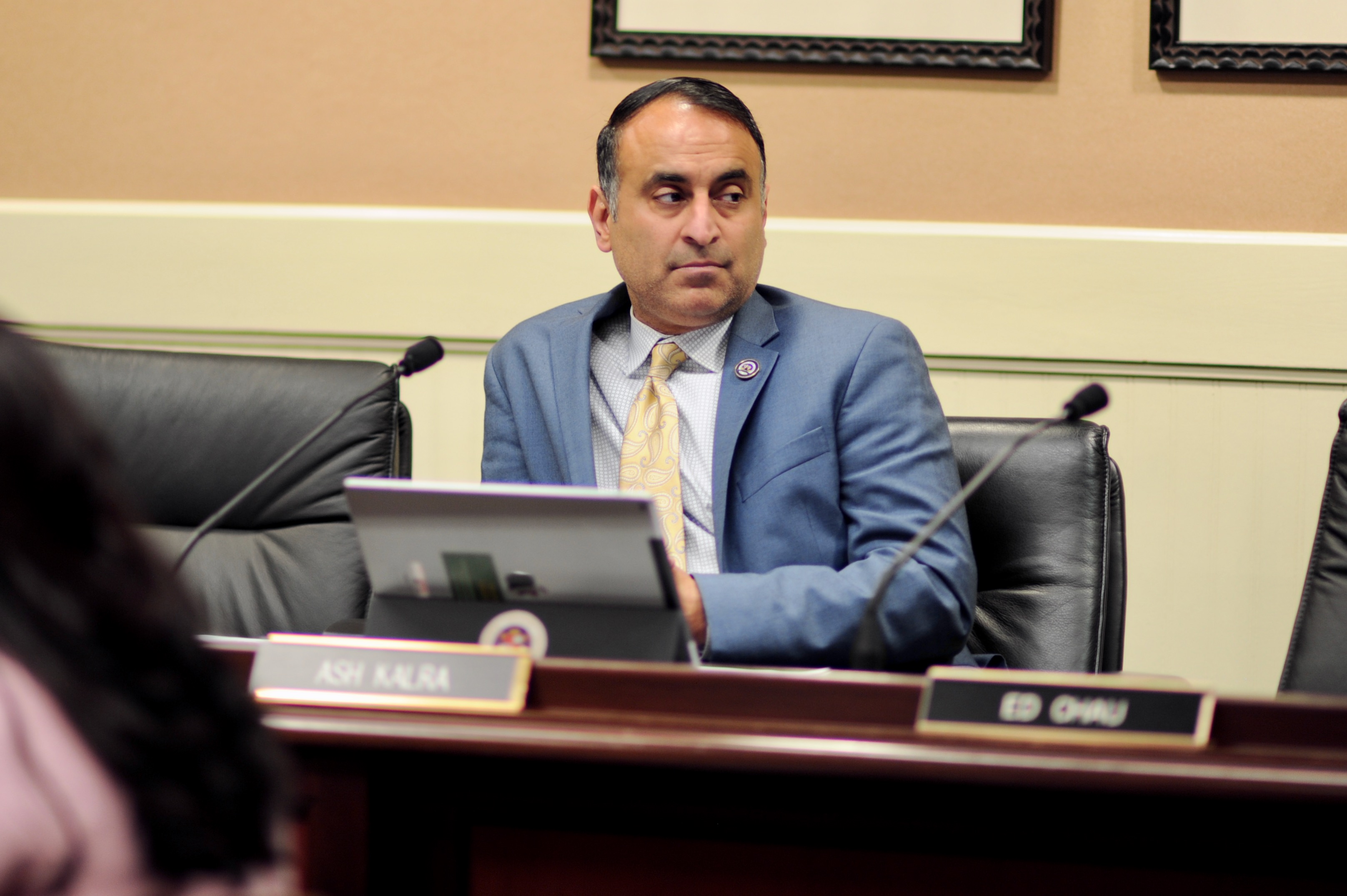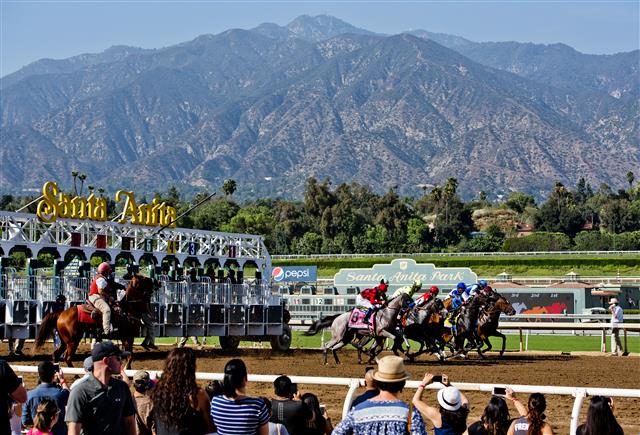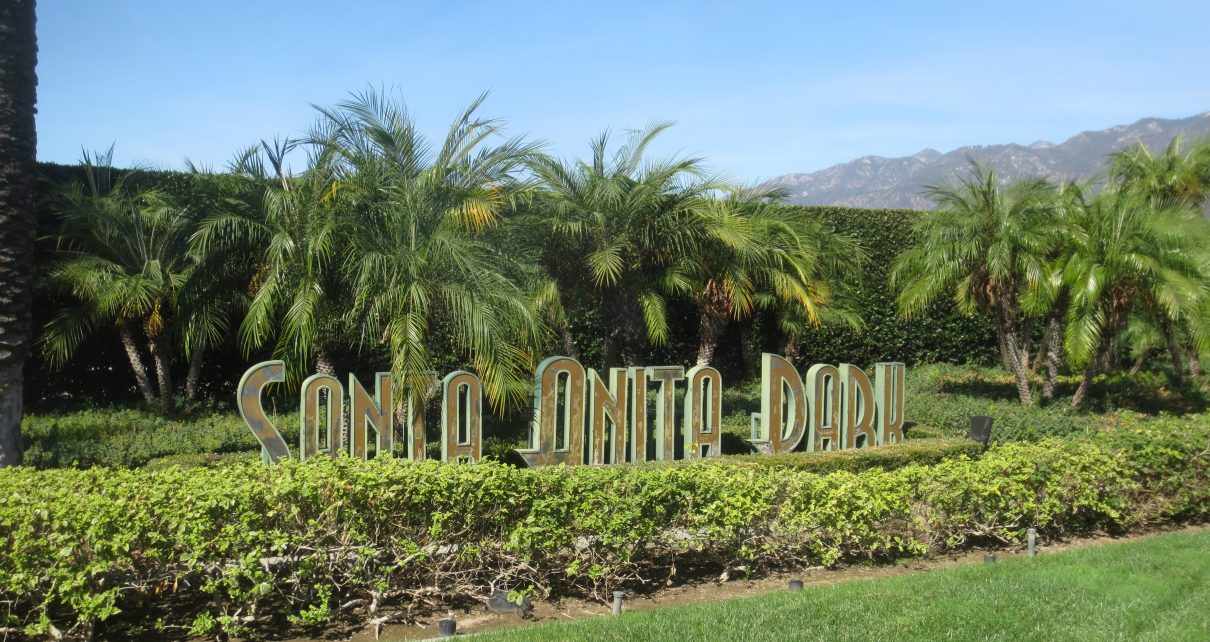
Santa Anita Park in Arcadia. (Evan Symon for California Globe)
Horse Racing Faces Major Protests A Week Before Breeder’s Cup
Protests and counter-protests at Santa Anita Park continue the debate over the future of horse racing in California.
By Evan Symon, October 24, 2019 5:35 pm
Santa Anita Park was the center of another protest and counter-protest over the future of horse racing Thursday, a week before the premier Breeder’s Cup next week.
The issue is over the future of the sport itself due to a large number of horse deaths earlier in the year. SB 469, which gives the power to the state to shut down any race track even above the objections of the owner, was signed by Governor Gavin Newsom earlier this year but has done little to stop the protests as the number of horse deaths grows. Since the bill was signed on June 26th, 27 racehorses have been confirmed to have died in California racetracks.
At Santa Anita Park, both protesters and counter protesters stood outside one of the major gates, which each side respectively getting attention and honks of support from motorists.
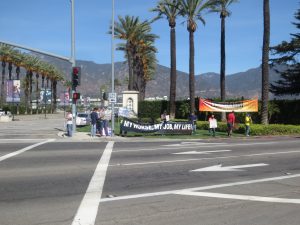
Among the counter-protesters were racetrack employees who had taken the day off to save their jobs and their industry
“We’re here to save the 77,000 jobs in California reliant on horse racing,” said Tom Knust, one of the many counter protesters. “We house many of the workers, including at Santa Anita. If there’s a ban, that adds a lot to the housing and homeless crisis. The track also gives medical care.”
“It’s incredible. There are three generations of workers here that they suddenly want to see out of work.”
“They also don’t think we care about the horses. We do. We do put some down, but it’s only a fraction of how many animals groups like PETA puts down a year.”
“They have no idea about racetracks. For example, where would they put them? Their backyards?”
Oscar de la Torre, a horse racing worker advocate, has been one of the central voices on saving workers jobs at the track.
“We support the reforms and protections of horses that [anti-horse racing advocates] do,” explained de la Torre. “The difference is that we’re the one taking care of the animals. They don’t.”
“We want to keep horses safe.”
With the recent spike of horse deaths, including several dozen early in the year at Santa Anita alone, de la Torre says that the track is quickly improving.
“With the spike in deaths, we’ve gone through a number of reforms,” noted de la Torre. “We’ve upgraded the track, we have more vets, more oversight. We’re even installing a $500,000 PET scan for the Breeder’s Cup next month that finds any problem in the horses legs.”
“And we’ve already seen a tremendous decline in deaths. We need the opportunity to implement all these and show that we can fix the problem.”
“They want to get rid of the industry, we want to get rid of the problem.”
“We’re the people who take care of horses. We care about them. Their solution is to kill all the horses if they’re banned.”
“Where’s the compassion for them? Where’s the compassion for people who would lose their jobs and homes?”
Across the street on the other side of the gate were the protesters, led by Heather Wilson of Horseracing Wrongs. Their goal is to end horse racing and to end premature horse deaths due to racing.
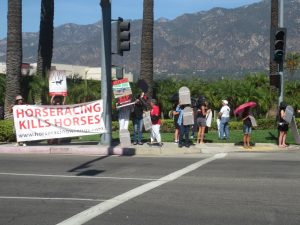
“They say they’re treated well, said Wilson. “But I’ve seen what happens to rodeo horses and the cruelty they go through. And I’ve seen the autopsies of rodeo horses and race horses. There’s no difference. We need to end this blood sport. Dozens of horses have already died in California tracks this year. This can’t continue.”
Wilson also brought up a point that counter-protesters did not address: the overall decline of horse racing in the United States. The New York Times found that, since 2002, overall bets have fallen by $4 Billion, while the number of new racing foals has nearly halved. Wilson reported similar figures.
“This is a dying sport. The foal crop, the number of new racehorses bred each year, has declined 50% during the last 3o years.”
“Cops have told me that 10 years ago this lot would have been packed with cars needing to park all along the street here. Now there’s barely any cars here. There’s no one.”
“For anyone interested in the sport it would have been unthinkable that it would be like this now.”
The number of major racetracks in California has also gone down. After the closure of Bay Meadows in 2008 and Hollywood Park in Los Angeles in the mid 2010’s to make way for the new Los Angeles Rams stadium, only Del Mar, Golden Gate, Los Alamitos and Santa Anita remain of the large tracks.
“This industry will shut down. It will happen. Like Greyhound racing in Florida. Ten years ago it was big, but next year the last tracks will be gone.”
Wilson also refuted the counter-protesters suggestion that, with a total ban, thoroughbred horses would be automatically killed.
“No. Remember, we love horses here. It would be like Greyhound racing in Florida and Arkansas. A horse racing ban wouldn’t be “all the sudden” and have all the horses be killed. It would be phased out over two or more years and horses would get to live in appropriate places.”
The protests have already sent major ripples statewide. A Thursday meeting of the California Horse Racing Board (CHRB) was canceled at Santa Anita due to the number of protesters estimated to attend and speak. Santa Anita Park , before 2019, has never been protested before in it’s 85-year-old history, and local officials have been struggling to contain protests, as well as figure out where they and counter-protesters, many of whom are employees, can go.
With similar protests in the works at Golden Gate Fields in Berkeley and next week during the Breeder’s Cup at Santa Anita, the question of the future of horse racing in California is far from being answered.
- Bill to Require Law Enforcement Disclosure if AI Was Used To Help Write Reports - August 7, 2025
- Gov. Newsom Files FOIA Request To ‘Expose True Cost’ Of L.A. Federal Troop Deployment for Anti-ICE Riots - August 6, 2025
- California Redistricting: How Newsom’s Plan Will Demolish Hard Fought GOP Gains - August 6, 2025


